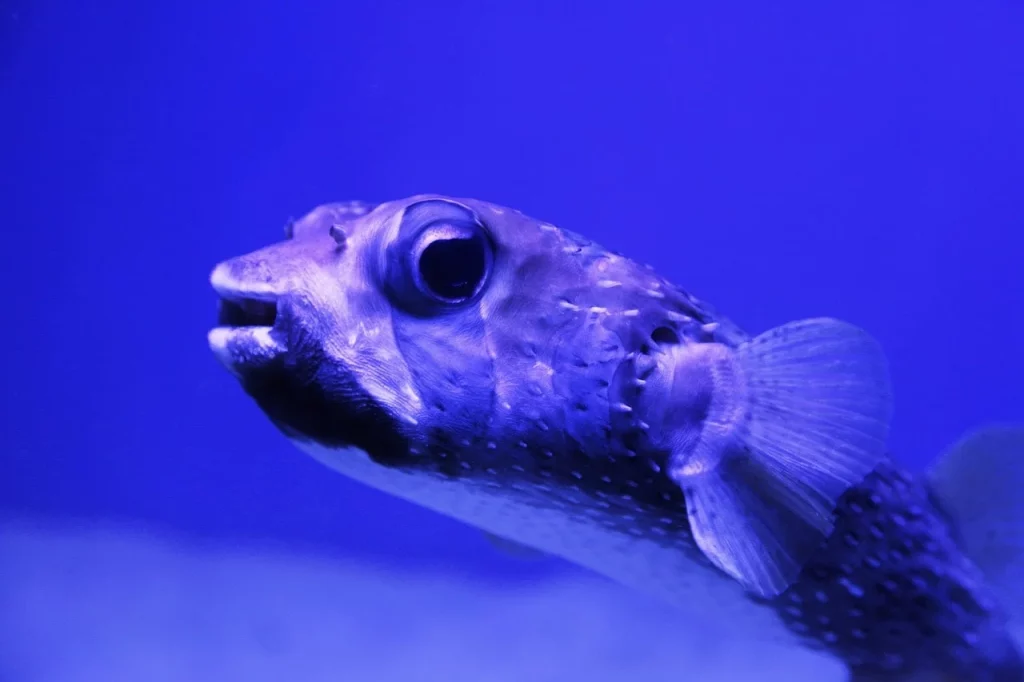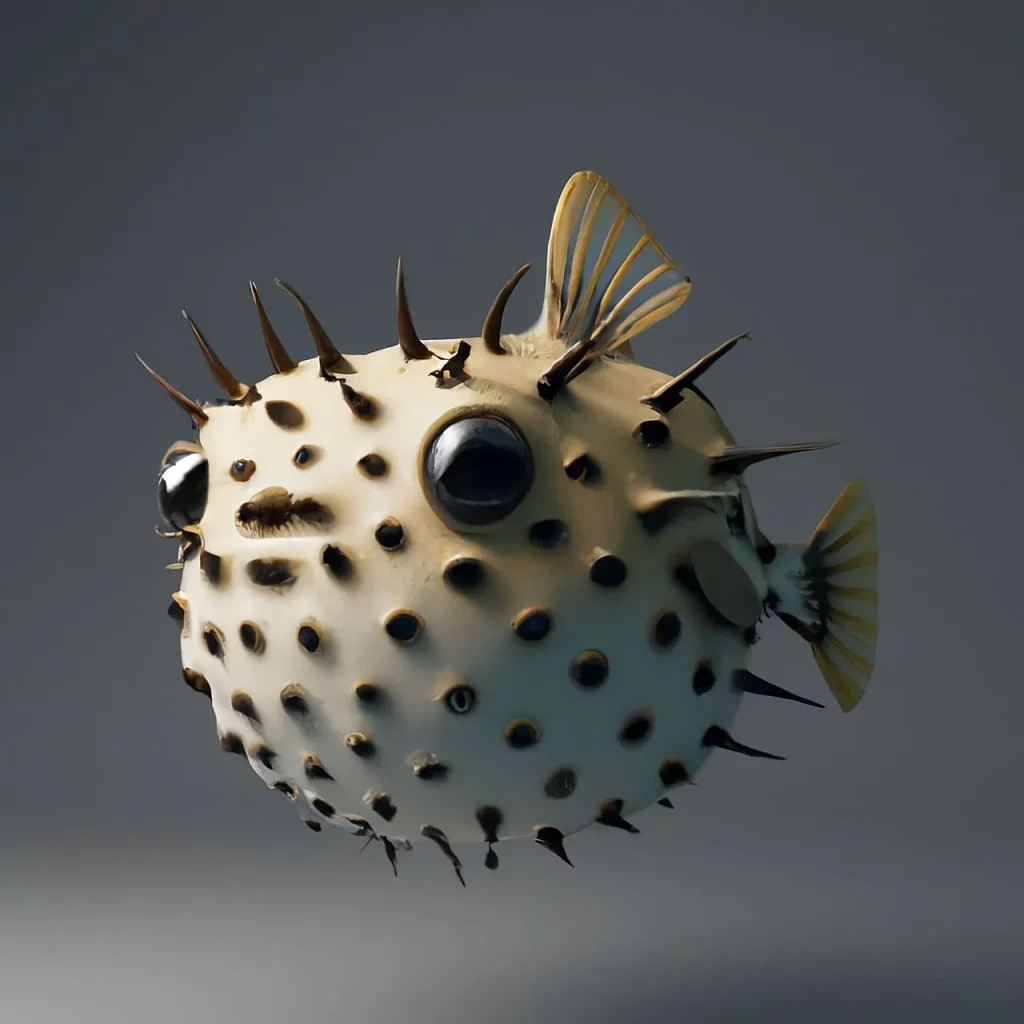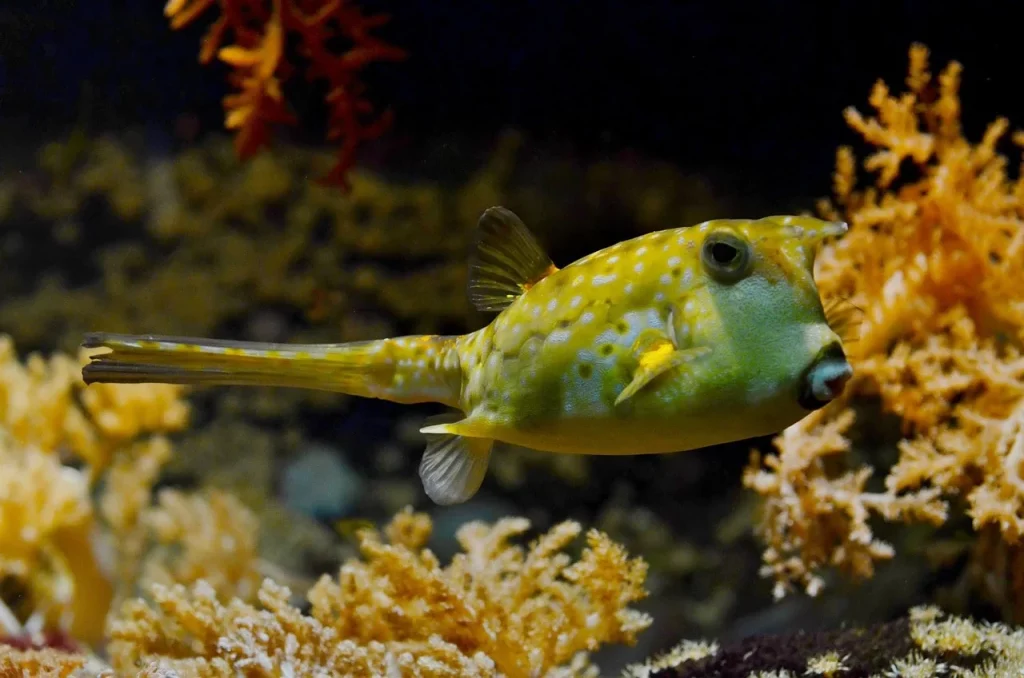In the vast, blue ocean, where the competition for survival is fierce, there exists a small, often underestimated, yet incredibly fascinating creature: the pufferfish. These little swimmers are the Houdinis of the sea, performing the ultimate disappearing act by puffing up to double their size when threatened.
But that’s just the tip of the iceberg, or should we say, the peak of the coral reef! We’re about to unveil some mind-blowing facts about pufferfish that will make you question everything you thought you knew about marine life.
From their lethal toxins to their ability to create underwater masterpieces, they are full of surprises. Are you ready to explore the mysterious world of pufferfish and discover why they’re not just another fish in the sea?
The pufferfish, with its ability to inflate, teaches us the art of transformation under pressure.
Unknown
Pufferfish Facts
Prepare to be amazed by the unique world of pufferfish. Absorb every fact with care, as a quiz at the end of this article will challenge your knowledge and prove your expertise.
- These sea creatures can expand their bodies to a much larger size when feeling threatened.
- Containing tetrodotoxin, a powerful neurotoxin, their skin and some organs are highly poisonous.
- They are a prized gourmet item in Japan, known as fugu, despite their dangerous nature.
- Rather than scales, these fish have thick, rubbery skin.
- Found in both tropical and subtropical seas and occasionally in freshwater, they show remarkable adaptability.
- Over 120 varieties of this species exist worldwide.
- They have beak-like teeth from fused dental structures, useful for breaking open tough shells.
- The ability to alter their coloration aids in blending in and signaling to others.
- When inflated, their spines become erect, a feature not always visible otherwise.
- Their inflation acts as a deterrent against potential predators.
- Mainly feeding on crustaceans, mollusks, and smaller fish.
- Unique to some, they craft elaborate designs on the seafloor as part of their mating rituals.
- In the wild, their average lifespan ranges between 10 to 15 years.

- Equipped with sharp vision, they can easily spot danger or prey.
- These fish prefer a loner lifestyle, only gathering for reproduction purposes.
- Without a buoyancy bladder, they ingeniously navigate by puffing water in and out.
- The tiny dwarf pufferfish measures under an inch at adult size.
- Human consumption can be deadly due to their toxic nature, with no cure available.
- Uniquely, certain species thrive in varied water conditions, from fresh to saltwater.
- Known for their leisurely swimming pace, their puffing ability is crucial for survival.
- Female eggs are often protected by males until they hatch.
- Utilizing tools like water jets to uncover prey shows their complex behaviors.
- Noted for their sharp intelligence, they can recognize their caretakers in captivity.
- The most toxic part, the liver, is ironically a sought-after delicacy.
- Fugu chefs undergo extensive training for years to safely prepare this dish.
- Pufferfish poison has been researched for its potential in developing new pain relief drugs.
- A few species don’t inflate but rely on their toxicity or spines for protection.
- In the aquarium hobby, non-toxic types are favored for their distinct looks and habits.

- Underwater acoustic communications have been documented among them.
- Remarkably, some can survive on land for hours by retaining air or water internally.
- During breeding periods, male rivalry often escalates into conflicts over females.
- Their spines are modified scales, which become prominent when they puff up.
- Even with their poison, certain large predators, like sharks, have developed immunity.
- Frequent inflation can be harmful, potentially leading to their demise.
- Among fish, they are considered highly evolved.
- A robust jaw helps them crack open shellfish and other hard-shelled prey.
- Their toxin is so potent that it could end the lives of 30 humans.
- Climate change and water pollution are major threats to their survival.

- Genomic research offers insight into their unique characteristics and resilience.
- They serve as ecosystem indicators, signaling the health of coral reefs.
- Man-made reefs aid in the study and preservation of their populations.
- Preservation efforts are vital to counteract the effects of overfishing and habitat loss, especially for those species valued in the aquarium trade.
- Studying their enzymes offers potential breakthroughs in biodegrading plastics.
- Ancient remedies have incorporated parts of these fish, and are used with extreme care.
- Advanced filtration systems in aquariums cater to their specific environmental needs.
- A keen sense of smell aids them in finding food and navigating their surroundings.
- Some species exhibit bioluminescence, glowing in the deep sea to communicate or lure prey.
- Genetic resilience to toxins in their environment has been a focus of recent scientific studies.
- Using environmental DNA (eDNA) sampling, researchers can track and study their populations without direct capture.
- Efforts to rehabilitate damaged coral reefs often include creating safe habitats for these fish, showcasing their role in marine biodiversity and ecosystem health.
Pufferfish Myths

Now that we’ve covered the factual side of pufferfish, we’re poised to tackle the myths. Let’s clear the waters and distinguish the genuine facts from the widespread myths.
- Pufferfish Inflate With Air
They actually inflate themselves with water, not air. When threatened, they quickly ingest a large amount of water (or air if they are out of water) into their highly elastic stomachs, which makes them balloon up. This defensive mechanism is used to deter predators. - All Pufferfish Are Poisonous
While it is often believed that all of them are poisonous, not every species contains the deadly toxin tetrodotoxin. The presence and concentration of the toxin vary widely among the different species of pufferfish, with some being completely safe to eat. - Pufferfish Poison Has No Antidote
It’s commonly thought that there is no antidote for pufferfish poison. Although no antidote exists in the traditional sense, supportive care, including respiratory support and activated charcoal, can be effective in managing and surviving tetrodotoxin poisoning. - Pufferfish Only Inflate When They Die
Contrary to the belief that they only inflate as a death throes act, they actually inflate as a survival strategy to avoid predation. The ability to puff up is a controlled and reversible process, and pufferfish can deflate once the threat has passed. - Eating Pufferfish Is Illegal
The consumption of pufferfish, known as “fugu” in Japan, is not illegal, but it is heavily regulated. Chefs must undergo years of training to obtain a license to prepare and serve fugu safely, due to the potential presence of lethal toxins in the fish.
No products found.
Pufferfish FAQ

Before you test your knowledge with our fun trivia, take a moment to review this FAQ section. Read carefully if you want to ace the quiz.
- Can pufferfish kill you?
Yes, they can be deadly. They contain tetrodotoxin, a potent toxin that can paralyze and even kill if consumed in sufficient amounts. That’s why it’s crucial to have pufferfish prepared by trained, licensed chefs if you’re daring enough to try it. - Can pufferfish eat carrots?
They are primarily carnivorous, feasting on algae, invertebrates, and sometimes shellfish in their natural habitat. While they might nibble on carrots out of curiosity in captivity, carrots should not be considered a regular part of their diet. - How long do pufferfish live?
The lifespan of a pufferfish can vary widely, depending on the species. In captivity, with proper care, some pufferfish can live for up to 10 years or more. - Can pufferfish recognize their owners?
They are surprisingly intelligent and can recognize their owners or regular caretakers. They’ve been known to exhibit different behaviors when they see familiar faces versus strangers. - What do pufferfish eat?
In the wild, pufferfish’s diets can include algae, mollusks, invertebrates, and sometimes hard-shelled foods like snails, which help wear down their ever-growing teeth. In captivity, their diet can be varied, with specially prepared fish foods, shellfish, and occasionally leafy greens as treats.
Pufferfish Trivia

Welcome to the ultimate pufferfish quiz! Get ready to puff up your knowledge, because if you don’t get any questions right, you might just find yourself mysteriously ballooning to twice your size overnight!
Conclusion
In conclusion, pufferfish are fascinating marine animals that capture our imagination with their puffing abilities. They navigate the seas with grace, puffing up as a defense against threats.
It’s interesting how something so cute can also be so deadly, thanks to the toxin some of them carry. These creatures remind us of the ocean’s mysteries and the delicate balance of marine life. Observing them can teach us a lot about survival and adaptation. So, let’s appreciate these spiky swimmers for their unique place in the aquatic world.
Think about something: How funny it could be if people also puff when feeling danger? Till next time, stay curious. Cheers.


